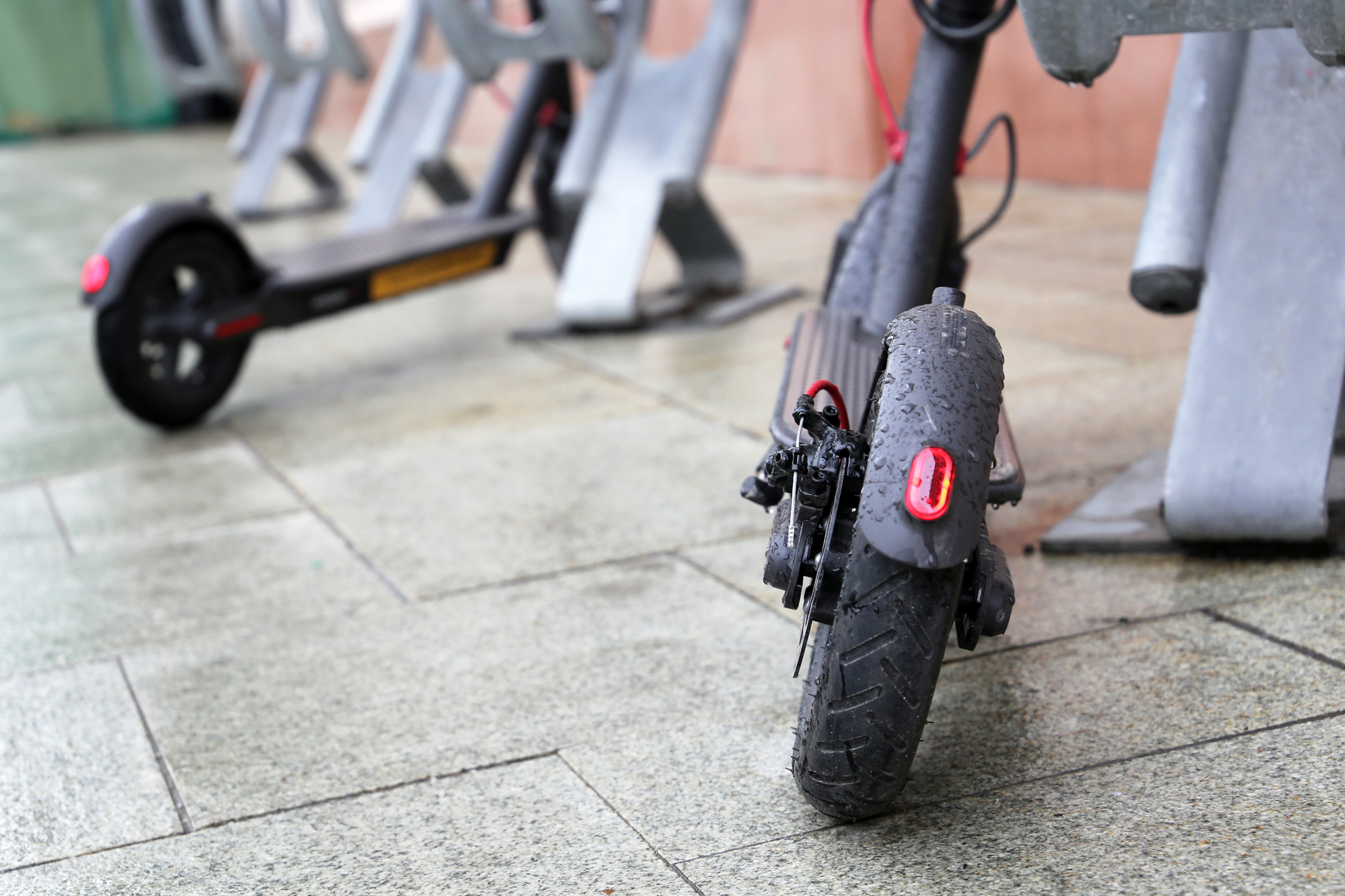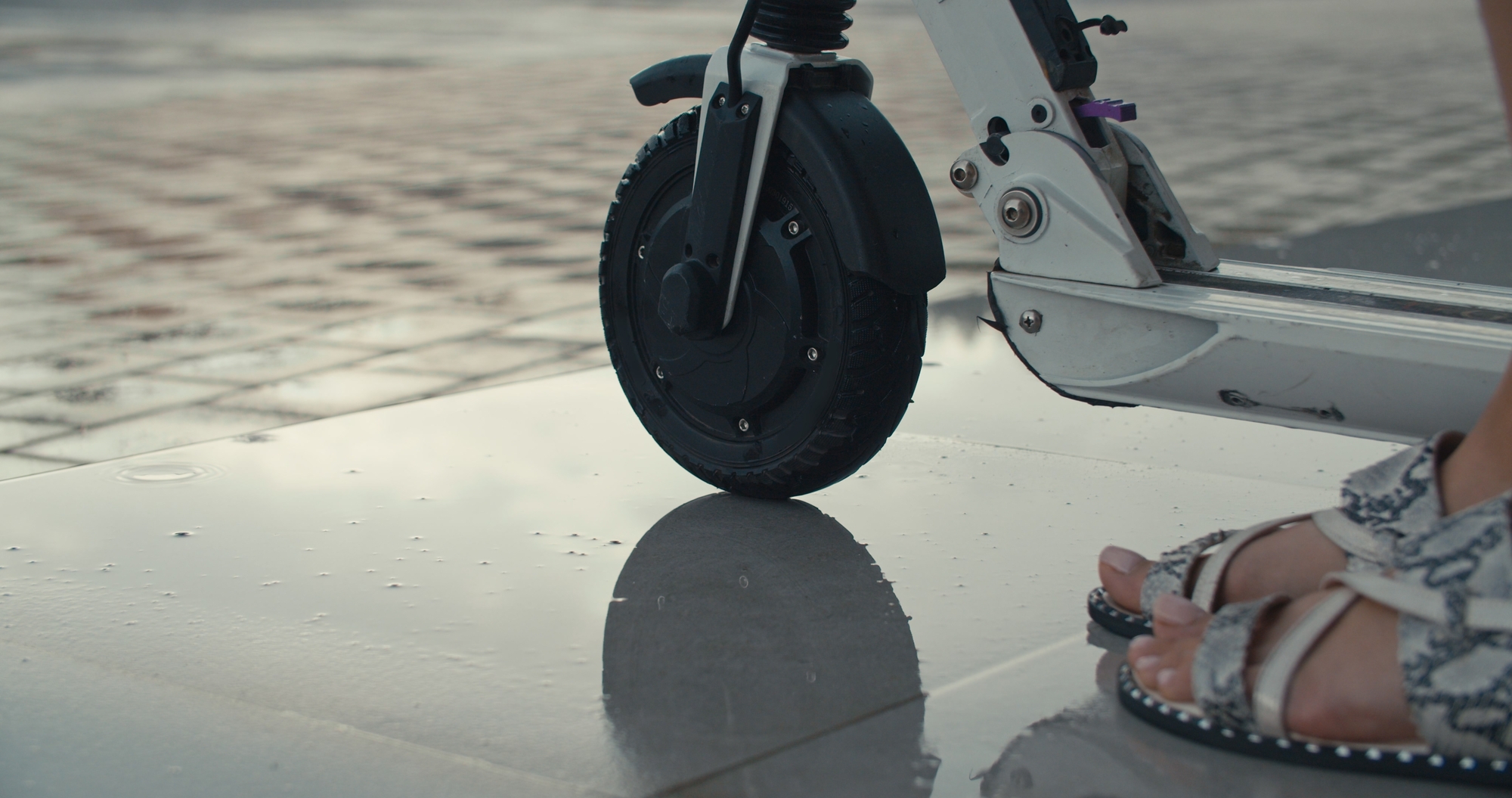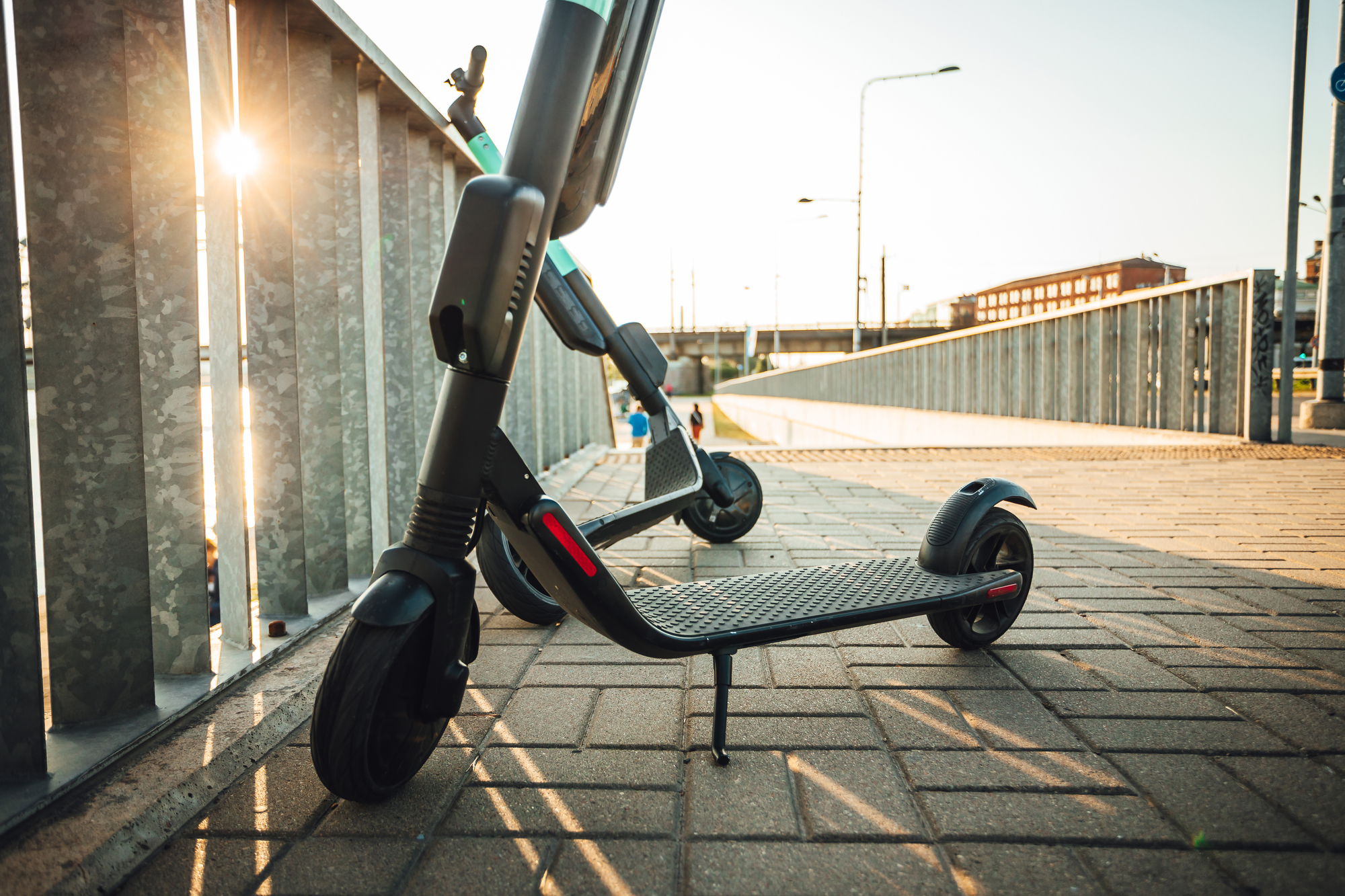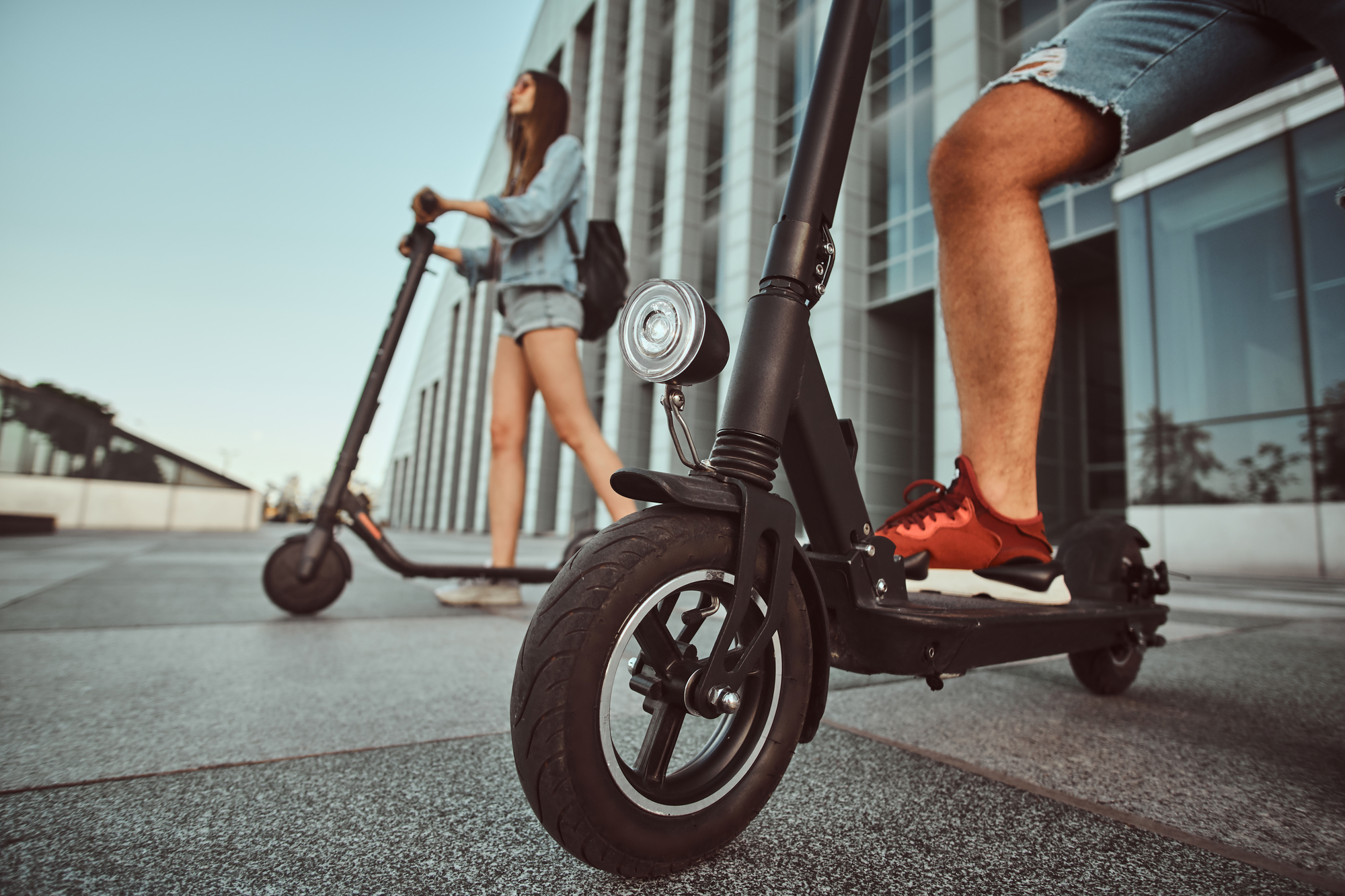Table of Contents
Electric scooters offer a host of benefits, including convenience and their cost-effective nature. They’re ideal for commuters or anyone that wants to get around quickly, but without the hassle of owning a car or using public transport.
Another benefit they offer is reducing carbon emissions – so it’s easy to see why so many people are embracing them.
But as with most metal-based structures, including cars and the motorcycle, an e-scooter is susceptible to corrosion and rust.
Luckily, you can reduce the risks of rust forming by performing some vital yet straightforward maintenance when it comes to protecting your scooter from the weather.
In this post, we’ll reveal how to promote clean and safe riding without leaving your scooter open to water damage.
The Difference Between Rust & Corrosion

While many people believe that rust and corrosion are similar, there are some distinct differences. Both occur due to oxidation reactions, but corrosion can affect various materials, and rust can only harm metals.
In simple terms, rust is a form of corrosion, but you can usually tell the difference between the two by the colouring. Corrosion often creates green and blue colours, while rust is known for its signature orange/brown shade.
How Does Rust Impact a Scooter?
It’s common for people to believe that rust is harmless because it’s not a biological hazard and doesn’t cause a chemical reaction. However, rust can still be dangerous, and it’s essential to understand the potential complications it can cause:
- Rust weakens metal material, and over time, this could damage the functionality of your scooter.
- If your scooter parts move over each other, rust can cause the metal surface to become stuck, which can be incredibly dangerous for your vehicle’s mechanisms.
- Some metals have magnetic qualities, which rust can directly impact.
- One of the most significant benefits of iron is its conductivity which is ideal for e-scooters to run correctly. However, rust insulates materials, which can lessen the conductive qualities of iron. As many scooters are made from steel produced with iron, it can pose significant problems.
How Does Corrosion Impact Materials?
While rust often occurs due to excess moisture, corrosion results from a chemical reaction between a material and the environment. This can be a liquid or gas, but salts, warm temperatures and acids will accelerate the process.
Corrosion is a worse problem than general rust because metals impacted by corrosion can seep into the sea, river and air. Not only does this affect the environment, but it can also harm wildlife and damage ecosystems.
When it comes to vehicles such as scooters, corrosion has a very similar effect as rust, so it’s essential to do everything you can to keep your e-scooter in good condition and ensure it’s protected.
Why Are Electric Scooters Subject to Surface Rust and Corrosion?
Electric scooters are technologically advanced means of transportation that enable people to travel longer distances without worrying about their carbon footprint. With many models having superior waterproofing features, the common misconception is that you won’t need to worry about water damage.
The fact is, you can tell how your scooter will prevent corrosion by its IP rating. The IP rating refers to how waterproof a scooter is, and it’s essential to protecting your mode of transport.
Each scooter rating has two specific numbers. The first will tell you how resistant to dust and other foreign materials your model is, while the second number provides the waterproof rating.
For example, if a scooter has a rating of IP66, you can guarantee it’s a premium model and will offer complete protection.
Waterproofing Ratings Explained
An electric scooter waterproof rating tells you everything you need to know about how it will perform in wet weather.
IP numbers can go all the way up to 8, but you’ll notice most models have an average rating. This is important, as rust and moisture directly relate to one another.
These are what the numbers mean when associated with the ratings:
- 4 – Offers protection from water splashes
- 5 – Your scooter will be protected from low-pressure jets
- 6 – Offers high levels of protection
- 7 – Will withstand being fully immersed in water for a short amount of time
- 8 – Can withstand water for a more extended period
When you combine waterproof ratings with the first number, you’ll get an idea of how durable your scooter is.
We always recommend that you choose a scooter with a minimum rating of IP54, which offers adequate levels of protection.
Let’s take a look at each IP rating in more detail:
- IP54 – offers some protection, but it might not be enough
- IP55 – Similar protection but can also shield your scooter from jets of water
- IP56 – Average protection from dust and moisture from all directions
- IP65 – Full protection from dust and water jets from all directions – but only at a low pressure
- IP66 – Complete protection on all levels
- IP67 – Fully waterproof
To summarise, an IP54 electric scooter will offer protection from a light rain but can begin to corrode and rust with direct contact with water. An IP67 rating means your scooter can be immersed in water and still perform well (although we advise you not to try it).
Why Does Your Scooter Need Corrosion and Rust Protection?
So, if an IP67 rating is highly effective for your scooter, then why do you need to consider protecting it? Well, any scooter with anti-corrosion properties will come with a hefty price tag, and if you’re on a budget, then you’ll have to for a standard model.
Luckily, riders can protect their scooter by performing some essential functions. So, let’s dive into the best ways to prevent rust and corrosion.
To Seal Or Not To Seal Your Motor?
While many scooters have some waterproofing features, you should perform rust protection on yours to prolong its lifespan. Water can still impact the motor, but while some experts recommend sealing it, others disagree and say it might affect its running.
We’d advise you to think carefully about how knowledgeable you are about scooter components and choose to perform other vital protection techniques.
Protect Your Battery
Protecting your scooter battery will enable you to reduce the risks of corrosion on the external parts. Any moisture can lead to rust forming on your scooter, but it’s crucial to protect the battery anyway.
A waterproof ring will prevent water from seeping into the battery, meaning it will prolong the lifespan and hopefully protect other elements of your scooter.
Beware of the Weather
Most people know that the winter weather can cause more accidents on the road, but the weather can impact your e-scooter in many ways, storing your scooter in winter is one option. To understand why you need to weatherproof your scooter, we need to look at the implications of the colder seasons.
Moisture = Rust
If you live in a dry and hot climate, you’ll find metal rusts less than in colder temperatures. Humid conditions can cause rust to form more freely because it requires moisture to develop. While a chemical reaction causes corrosion, rust results from corroded materials being exposed to water.
As you can imagine, in rainy conditions, rust is commonplace. Dry metal will stop your scooter from rusting, so it’s essential to keep it dry.
Acid Rain
Any rain will cause corrosion, but acid rain reacts quickly due to its chemical composition. Acid rain usually occurs due to volcanic eruptions and pollution.
As corrosion results from chemicals in the environment, it’s only natural that urbanised areas will damage your scooter more than if you live in the countryside.
Temperature
While cold temperatures will cause less rusting of your scooter, heat can still have an impact. It’s not so much the temperature that should concern you, but the humidity. Cold weather can still occur in humid conditions, which will accelerate the conversion of corrosion to moisture.
Snow and Ice
It’s common for local councils to lay down road salt when it snows to ensure vehicles can retain their grip on the road. But while salt may be the most effective de-icer, it can also accelerate the production of rust.

How to Protect Your Scooters Metal Parts
Keep them dry
As bare metal is the breeding ground for rust, protecting it should be the top of your priority list. Most metal parts are highly susceptible to water, so the best thing you can do is always keep your scooter dry.
If your scooter is in the garage or storage shed, you can use a dehumidifier to keep it moisture free. But using a cloth to wipe your scooter will keep it dry and clean – two things metal should always be.
Opt for stainless steel scooters
Stainless steel contains iron, which is known to rust quickly. But it the steel also contains substantial amounts of chromium which has a fast oxidisation rate. When the oxygen hits the chromium, it forms a protective layer and reduces the risk of corrosion and rust.
Try to keep your scooter scratch-free.
Deep scratches in the scooter frame might seem like an aesthetic problem, but the fact is it can still create rust. When water seeps into those scratches, it will be harder to remove with a cloth and rusting is inevitable.
Use protective coating
A protective coating will prevent the speed at which rust forms, which is beneficial if you have a budget e-scooter. If you use a clear coat, you’ll find it won’t impact your scooter much, but it will prevent corrosion.
Buy anti corrosion spray
A bottle of superb service spray can do wonders for your electric scooter. Not only does it protect it from corrosion and rust, but the spray will also act as a lubricant and cleaner. Better still, a 500 ml bottle is reasonably cheap and will last you a long time.
Both protective coating and spray are effective, but the coating can be a bit sticky. If you decide to use it, try to do it in the evening so the coating or spray will dry properly.

Final Tips
Minor adaptions to how you treat your e-scooter will make a big difference, so make sure you keep your scooter clean and provide it with adequate shelter all year round.
Excess water is the primary cause of rust, but taking a few minutes to dry the frame and components after use will prolong the scooters lifespan. If possible, you should avoid riding in the rain and snow to prevent accidents, but we understand that you’ll need to brave the bad weather in some cases.
These extra tips should help you stay safe and keep your scooter healthy.
Wear shoes with strong grips
The deck of your scooter can become slippery, so to avoid crashes, it’s best to wear shoes with strong grips. Trainers will work, but if you’re using your scooter for a daily commute, we highly recommend you store your work shoes in a bag.
Make sure your wheels are stable
The more secure your wheels are, the more likely it is that you’ll avoid accidents and collisions. You can find tires with better grips for the winter weather and perform regular maintenance to ensure the braking surfaces work.
Maintain all structural attachments
Electric scooters are relatively sturdy modes of transport, but you should always do your best to ensure all structural attachments remain in working order. Loosening structural attachments can encourage the presence of water and cause accidents if your scooter isn’t damaged.
Use lubricant
Using lubricant can make a big difference to your scooter, and there are specialist products available to maintain its health. Dry lube is ideal for winter conditions because it’s strong enough to withstand the elements, meaning you can protect your electric scooter from heavy rain, winds and frost.
Invest in anti-corrosion spray
Anti-corrosion spray is an investment you should seriously consider. Not only does it protect your scooter from corrosion occurring, but it can also tackle and reduce the effects of rust. Most bike sprays will work on your scooter, but we advise you to read the manual to ensure the spray suits your scooter components.

The Bottom Line
Rust is an unavoidable occurrence, and regardless of what you do, it will always find a way to form.
But luckily, taking the steps we mentioned will offer added protection during the colder months or humid temperatures and ensure you have a positive experience.
Untreated moisture can have long-term implications on your e-scooter, but keeping it clean, dry and water-resistant will ensure it lasts for years instead of a few months.
With a bit of common sense, specialist scooter lubricants and protective spray, you can protect your e-scooter.
Most sprays are relatively cheap, and they’ll help you avoid costly repairs and replacements, which will be inevitable if you don’t take the necessary steps to maintain your scooter.
Hopefully, this post gives you some valuable tips that you can put into practice. Remember, electric scooters offer so many benefits, and as long as you perform some essential maintenance, you’ll be able to save money and enjoy the ride.

